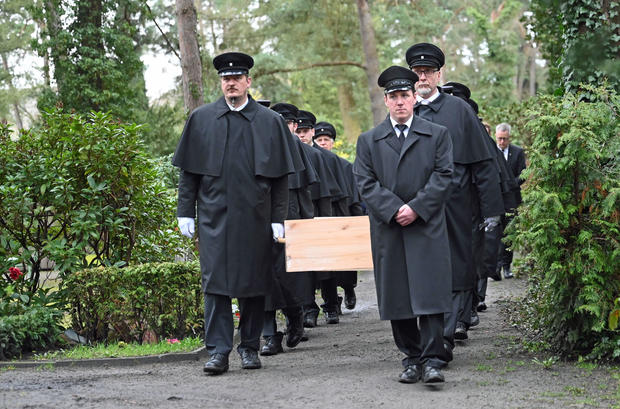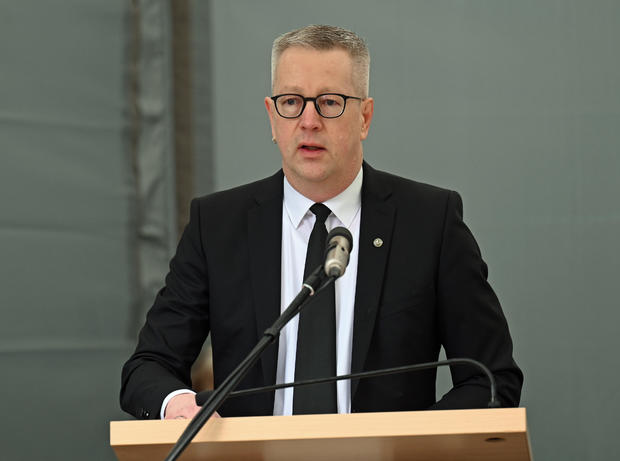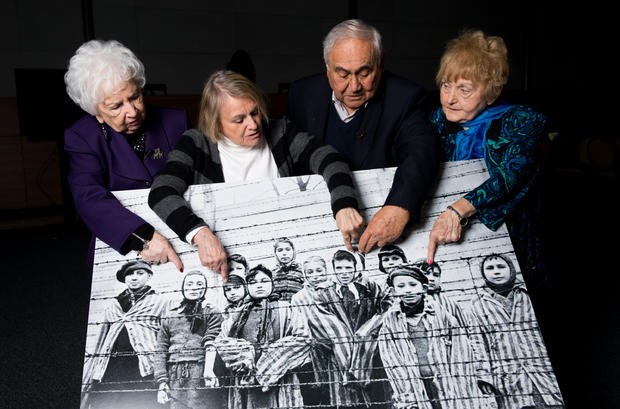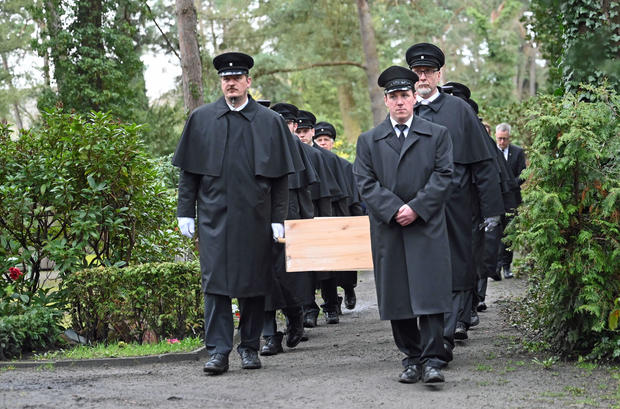Construction workers made a grisly discovery in 2014 during excavation work on the grounds of Berlin’s Freie Universitaet: fragments of human bones. Over the next two years, thousands more bone fragments were found around the site, thought to have been part of “scientific” collections held by the Nazis.
Berlin held a funeral Thursday to honor the people they belonged to. Their identities remain a mystery, but they were undoubtedly the victims of crimes committed in the name of science.

Jonathan Penschek/picture alliance via Getty Images
“It is our duty, even if it has been a long time, to grant peace to all the victims, even if we do not know their names,” Guenter Ziegler, president of the Freie Universitaet, told AFP.
The burial, organized by the university, took place in a cemetery in the west of the city, close to the spot where the 16,000 bone fragments were discovered during archaeological digs after the initial find.
The site where the bones were found was once home to the notorious Kaiser Wilhelm Institute of Anthropology, Human Heredity and Eugenics (KWIA). Founded in 1927, the KWIA was a hub for Nazi scientists during World War II, including doctor Josef Mengele, notorious for his experiments on prisoners in the Auschwitz concentration camp.
Traces of glue and inscriptions on the bones suggest they were part of collections held by the institute, experts say.
The experts concluded that the bones came from “criminal contexts” dating back to the colonial period in particular, but that “some of the bones may also have come from victims of Nazi crimes.”
Experts say the bones belonged to at least 54 men, women and children, most dating from at least two centuries ago.
They also included fragments of the skeletons of rats, rabbits, pigs and sheep.
After lengthy consultations, the university decided not to perform any further investigations on the bones, out of respect for the victims.
Separating them into categories “according to different sources, different crimes and different parts of the world” would risk repeating history, according to Ziegler.
“We would then have reproduced exactly what we wanted to avoid: a division into different classes,” he said.

Jonathan Penschek/picture alliance via Getty Images
“Of course, I would like to know who these people were, but it wouldn’t be appropriate given what was done to people in the name of the institute,” said Susan Pollock, the archaeologist who led the research.
The bone fragments range from around the size of a fingernail to 12 centimeters, and none were found fully intact, according to Pollock.
As well as coming from victims of colonial crimes, they may also have been acquired through grave robberies around the world.
Pollock noted that the KWIA’s first director, Eugen Fischer, conducted research in the German colonies in southern Africa at the beginning of the 20th century.
A collection of human remains from around the world named for the anthropologist Felix von Luschan — who carried out the collecting partly in the colonial context — was also housed in the institute.
Until 1945, the KWIA “disseminated research on racial hygiene throughout the world … and participated in the crimes of National Socialism,” according to the Freie Universitaet.
The institute “turned human lives into things, into research objects,” Pollock said.
Today, a small rusty plaque on the side of a university building near the site of the former KWIA reminds visitors of the abuses committed there.
Mengele sent “eyes of people who were murdered in Auschwitz to this institute,” but also other organs, said Pollock.
Germany has already worked extensively, albeit belatedly, to identify the remains of thousands of disabled and sick people exterminated under the Third Reich as part of the Nazi regime’s “euthanasia programs,” supported by scientists and doctors.
The decision not to pursue further investigations into the bones found in Berlin was taken in consultation with groups representing the alleged victims — including the Central Council of Jews in Germany, the Central Council of German Sinti and Roma and the Central Council of the African Community.
The first two in particular objected to the use of DNA analysis, which they said would be “invasive.”
The burial was to be carried out without any religious symbols and in a way that was not “Eurocentric,” according to the university.
In 1992, 60 Minutes correspondent Lesley Stahl interviewed Eva Kor, an identical twin who survived Mengele’s brutal experiments. At the time, Kor recalled how her twin sister, Miriam, helped sustain her life at Auschwitz.
“I was continuously fainting out of hunger; even after, I survived,” Kor said. “Yet Miriam saved her bread for one whole week. Now can you imagine what willpower does it take?”
Kor died in July 2019 at the age of 85.

Ian Gavan, Getty Images
- In:
- Nazi
- Germany
